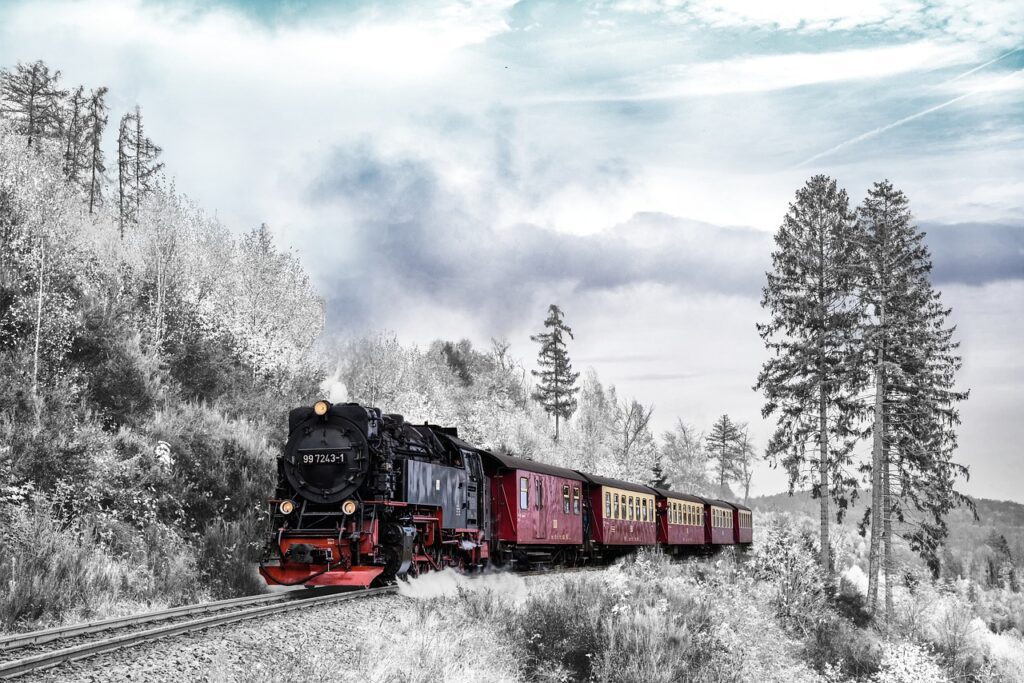We have prepared a complete guide to the weather and seasons in the United Kingdom, with tips for enjoying each of them. Come with us to explore this country full of surprises!
What is the weather like in the UK?
To begin with, it’s good to remember that the United Kingdom is located in the northern hemisphere of the planet. In other words, the seasons there occur in opposite months to Pak, which is in the southern hemisphere.
So, when it’s winter in England, for example, it’s summer here in Pak. And vice versa. To get your bearings, see below when each season occurs in the United Kingdom:
- Spring: from March to June;
- Summer: from June to September;
- Autumn: from September to December;
- Winter: from December to March.
Overall, the climate in the UK is temperate oceanic, with cold, wet winters and cool, wet summers. The region offers incredible natural landscapes in all seasons, but it is important to be prepared for climate variations and constant humidity .
With mild temperatures throughout most of the year, the climate averages between 8°C and 11°C, reaching 32°C during the summer. Rains are frequent throughout the year, with an increase in intensity in late autumn and during winter.
However, as it is a group of nations, made up of the countries on the Island of Great Britain (England, Scotland and Wales) and Northern Ireland, the climate can change throughout the territory. Therefore, we will comment a little on the particularities of each region in the next topics.
Climate in England
England, the hottest and rainiest part of the United Kingdom , has well-defined seasons. In spring, temperatures vary between 10°C and 15°C, bringing a more beautiful and flowery look to cities.
The English summer is known for providing more pleasant temperatures, varying between 18°C and 23°C. Peaks of 30°C may even occur. This is the most awaited season for everyone, who takes advantage of the longer days (with the sun setting at 8 pm) to enjoy the parks and beaches.
In autumn, the weather becomes gray and rainy again, with temperatures varying between 12°C and 18°C. But don’t be discouraged! This doesn’t take away from the beauty of the season. As the leaves dry and fall, the cities take on a charming orange hue.
With shorter days, the temperature in England during winter is below freezing. Ranging between -5°C and 10°C, greater preparation is needed to enjoy this season. On the other hand, cities become emptier, prices drop and there are lots of cool events, such as winter and skating festivals.
London’s climate is a different case . The city is known for having the hottest temperatures in summer and coldest in winter. In addition to the extremes, the weather is unpredictable and changes all the time. Here’s the old tip: when walking around the capital of the United Kingdom, always carry an umbrella or raincoat in your backpack.
Climate in Scotland
Leaving the hottest region, let’s go to the coldest: Scotland has the coldest and wettest winter among the UK’s climate, with a maximum temperature of 5°C. Are you looking to see snow? There, in the mountainous region, it snows around 100 days a year .
Following more cold days, Scottish Autumn has shorter days and temperatures between 8°C and 14°C. Light drizzle and cloudy days require a good waterproof jacket, but they don’t stop you from enjoying the cities in the yellow and orange tones of dry leaves.
Summer and spring in Scotland provide more pleasant temperatures, but it is still a little chilly (for us Pakis). With an average of between 15°C and 20°C in summer and 7°C and 13°C in winter, you can enjoy the longer days and the festivals that take place there during this period.
Climate in Northern Ireland
If you are planning a trip to Northern Ireland, make sure you bring clothing suitable for all seasons, as you can experience all four seasons in a single day.
With cold and wet winters, average temperatures vary between 2°C and 7°C. Snow is common in the mountains but rare in lower areas. Summers are mild and humid, with average temperatures between 15°C and 20°C.
Rain is constant throughout the year in the country, with an annual average of around 1000 mm. Coastal areas receive more rain than the interior, and autumn is generally the wettest season. With year-round high humidity , days can feel colder than they really are.
Regardless of the time of year, you can explore Northern Ireland’s stunning landscapes in all seasons. The traveller simply needs to be prepared with the appropriate clothing and plan carefully.
Climate in Wales
In Wales, it’s also common to experience all four seasons in a single day. With mild winters and cool summers, temperatures can vary significantly by region and altitude, making it important to prepare for changes in weather while travelling.
The average temperature in winter is around 5°C, while in summer it is around 20°C. Rain is constant throughout the year in the country, with coastal areas and mountainous regions being the wettest. So, when the sun comes out, cities come to life with outdoor festivals, concerts and sporting events.
Autumn is generally the rainiest season, with temperatures varying between 5°C and 15°C throughout the day. Spring is the driest season, with temperatures that gradually increase throughout the season, varying between 13°C and 17°C.
The weather in Wales can be unpredictable, but that only adds to the charm of the place. Just make sure to bring an umbrella and a waterproof jacket to stay comfortable in any weather.
Best time to go to the UK
You’ve noticed that the weather in the United Kingdom is variable and unpredictable throughout the year, right? With this in mind, the best time to visit the country may depend on what you are looking for on your trip.
If you like hot, sunny days, the best time to go is in summer, from June to August, when temperatures can fluctuate between 20°C and 25°C. However, prices may be higher and tourist attractions more crowded during this period.
If you prefer to avoid the crowds and are willing to deal with cooler, wetter temperatures, spring and fall are good options. With average temperatures between 10°C and 15°C during the day, it is possible to enjoy a more pleasant climate and lush natural landscapes.
Winter may seem like the least attractive period when it comes to weather in the UK. However, despite the cold and humidity, it is during this season that Christmas and New Year festivities take place in cities such as London and Edinburgh, which compensate for any climatic discomfort.
Regardless of the season chosen, Great Britain offers many tourist and cultural attractions to be enjoyed all year round. Don’t let the weather put you off, just pack appropriate clothing and make the most of everything the country has to offer!
I’m Djavan Dias, or DJ for short. I’ve swapped corporate life for endless adventures, sharing travel tips and insights on Premier Wanderlust. Dive into a world of smart travel and unforgettable experiences with me!

